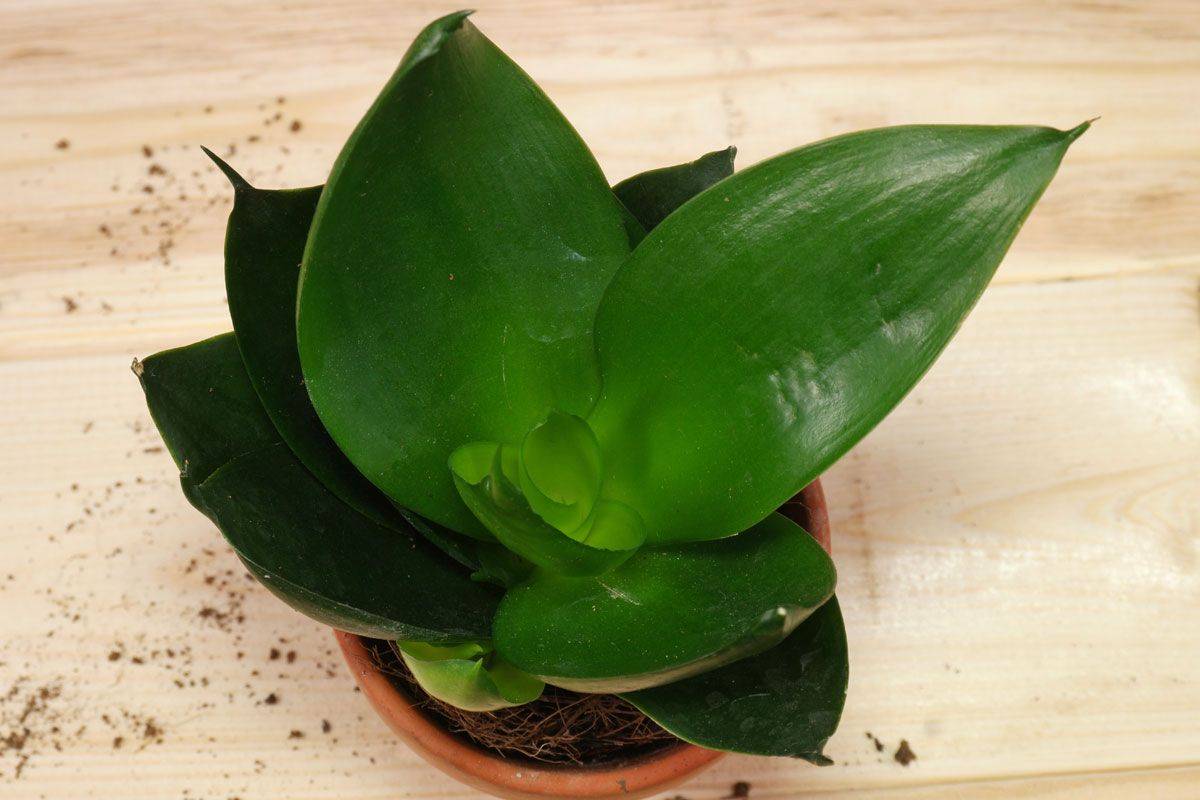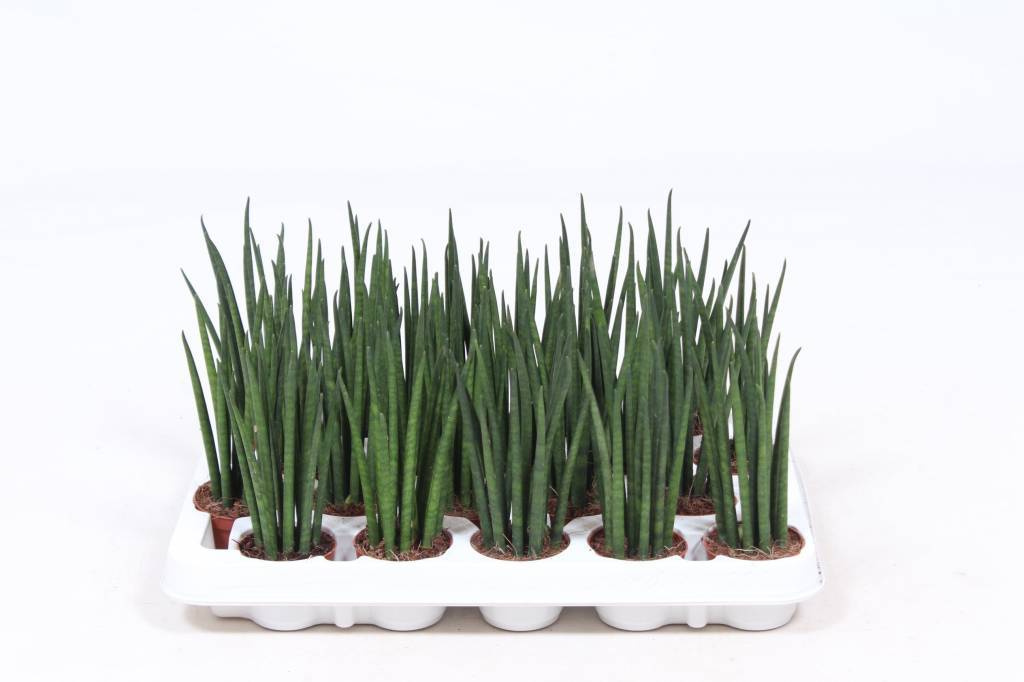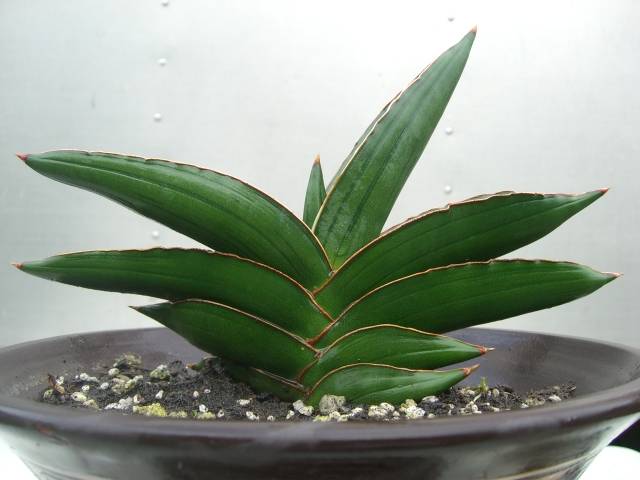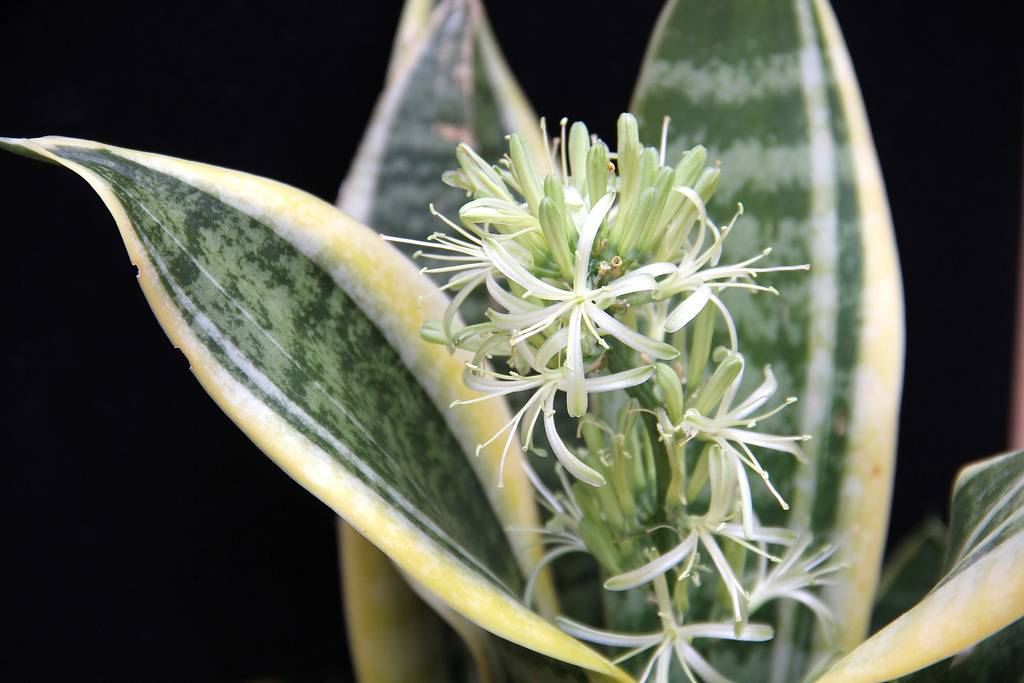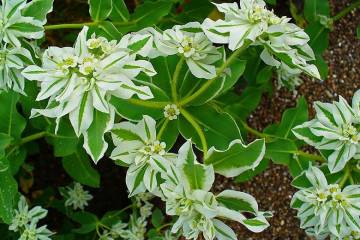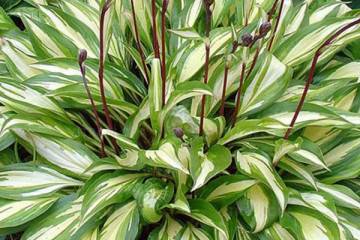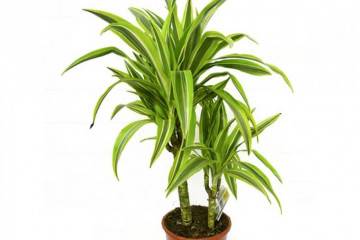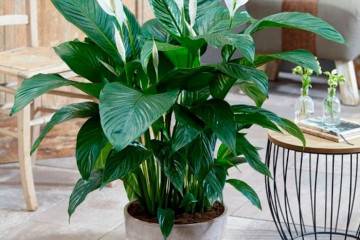Sansevieria flower - species and varieties, description
Content:
Sansevieria is one of the most popular indoor plants. It owes its popularity to original external data, unpretentiousness and the ability to adapt to any growing conditions. There are more than 60 different species in total, but only 10 are grown indoors.
Brief description of the plant
All plant species are so different from each other that it is sometimes difficult to believe that they are close relatives. However, there is a general botanical description of the group:
- the rhizome is creeping, on it there are root hard leaves and a huge number of processes that can split the pot if the flower is not transplanted in a timely manner;
- leaves of most species are tall, up to 1 m in length, always pointed at the ends;
- the direction of the leaves is varied: from erect vertical to creeping, located almost parallel to the soil;
- the color of the leaves is green with additions of various shapes and colors. It can be spots, yellow stripes running along, a border around the edges. Breeders are constantly breeding hybrids with new colors;
- some species are characterized by a waxy coating that protects wild sansevieria growing in hot climates from strong evaporation;
- home sansevier, as it is also called, blooms infrequently, but in natural conditions it happens regularly. The flowers are small, greenish-white in color with narrow thin petals, they are located on a long vertical peduncle and emit a very pleasant aroma, which is especially delicately felt in the evening.
Sansevieria: types of flower
The following varieties are very popular among florists.
Sansevieria three-lane
Sansevieria trifasciata is the most popular of its kind. One has only to pronounce the mother-in-law's language, as everything immediately becomes clear.
Description of the appearance of the flower:
- leaves are long, fleshy, pointed towards the end, dark green with transverse dark stripes;
- there is no stem, all leaves come out of the root socket;
- flowers are small white fragrant, they are collected in panicle inflorescences.
The main varieties of three-lane sansevieria (sansevieria):
- Compact is a hybrid of the Laurenti variety, which is characterized by beautiful, decorative leaves that are effectively curved inward, which gives the impression of a basal rosette of volumetric shape. It grows slowly. To preserve the characteristics of the variety, reproduction can only take place by dividing the rhizome. In care, it requires moderate watering, does not tolerate excess moisture;
- Jade is a hybrid of the Hanny variety, which is found only in the collections of those who professionally breed these flowers. It is characterized by medium-sized rosettes, low pointed leaves, slightly deviating outward, of a solid saturated green color. Unlike most of the species, Jade does not bloom;
- Sansevieria (pike tail) Robusta is distinguished by dense rosettes of short, wide green leaves with longitudinal dark stripes;
- Sansevieria Black Gold is a variety that appeared not very long ago. These plants have about 10 long, narrow leaves with a blue tint;
- Sansevieria Futura Superba is a hybrid of the new Futura variety.Despite the fact that he appeared recently, he has already managed to gain popularity among fans of indoor floriculture. The rosette consists of 10 or more light green leaves. Their height reaches half a meter, and their width reaches 10 cm.The leaves are hard, even tough. From the same group, there is another new, but undersized variety of sansevieria - Gold Vedi;
- Silver Queen is a hybrid, the leaves of which are long and thin, gray-blue in color with a silvery sheen (these are rare colors that have recently been bred by breeders). The entire leaf plate is covered with dark green watercolor stains. There is a slightly noticeable border along the edges, emphasizing the main color. This variety also has a popular name. He was nicknamed "the snow queen".
Sansevieria cylindrical
The cylindrical variety is characterized by original twisted leaves, which outwardly resemble elongated cylinders (hence the name). The plant is warmly loved by flower growers, as its aerial part is intertwined, creating original forms.
Popular varieties:
- Mikado is a sansevieria, which is not very common and practically unknown to lovers of indoor floriculture. Its leaves are thick and tall, green in color with transverse dark stripes. Another name is Bakularis;
- Sansevieria Bonselensis is the owner of voluminous cylindrical leaf plates arranged in a fan-like manner. The color is green, the cylinders are covered with a slight waxy coating, and the standard dark stripes run across;
- Sansevieria Samurai is distinguished by short leaves about 10 cm long and about 3 cm wide. The shape of the leaf is triangular. This is a dwarf flower that grows to a maximum of 20 cm. The second name of the variety is Dwarf.
Sansevieria large
The Grandis Sansevier is the largest of all its relatives. The leaves are very long (up to 1.5 m) and wide. Due to its impressive size, it has earned the popular nickname "elephant ears". Dark zigzag patterns run along the green leaf plates, and red edging along the edges. This is a flowering variety, the buds are located on a large, tall stem and are collected in wide clusters.
Popular varieties:
- walking (Pinguekula) has an unusual property for all sansevierias - it forms a kind of trunk on which leaves of the original shape are placed. They are large, sharp at the ends and have a thin border. The rosettes are located on the shoots extending from the main trunk. Due to this, the impression is created that the flower is walking;
- Sansevieria Francisi is one of the rare creeping stem cultivars. Tubular cylindrical leaves extend from the main trunk. Their color is dark green, the texture is not smooth, but a little rough. The length of the plant reaches 60 cm. It will look most impressive in hanging pots, where the flower will look like ampelous.
Other species and varieties
In addition to the main varieties, grouped into the most common groups, there are other varieties that are still outside the categories, but, nevertheless, are even more popular. They have external differences, differ in origin and characteristics of vegetation and reproduction. The most common are the following:
- Sansevieria Zeylanika is popular due to its wide, low (up to 40 cm) leaves, painted in a silvery or bluish-green color, on which stripes and specks are located in waves. This is one of the most beloved flowers among the people, which is on a par with variegated varieties;
- Sansevieria Kirki owes its name to the breeder and collector D. Kirki. This is a flowering plant species. Small white flowers are collected in large inflorescences of umbrellas.Against the background of dark green leaves, snow-white flowers look very impressive. Due to its similarity with the stars, shining brightly against the background of the starry sky, the variety received a different name - Star. The main tone of the leaves is dark green, in one rosette there are from 7 to 17 pieces, pinkish or white specks on the main background;
- Sansevieria Masoniana is another flower named after its creator. This time, with the help of a plant, the name of the English breeder M. Mason is immortalized. Its leaves are wide and long, rounded or oval, dark green with light dots along the entire length. The width of the leaf can reach 25 cm, the length with good care can be 1 m. It prefers to grow in partial shade or shade, but is able to withstand exposure to sunlight. One of the varieties of this variety is Victoria Sansevieria - a shorter hybrid;
- Sansevieria Diamond flame (Whitney) grows up to 50 cm, in one rosette there are strictly 4 leaves, shaped like an inverted pyramid. The middle of the leaf is dark green, and a two-color striped border runs along the edges;
- Manolin - long, thin, drooping leaves, reaching a length of 1.5 m. Color options: blue, light blue, aquamarine.
Any of the types of mother-in-law's language is able to decorate a room, give it a new unusual look. And, of course, here we are not talking about rare, exotic varieties. They will simply transform any space, adding a touch of originality there. Many lovers of indoor flowers create whole compositions, mixes, combining different versions of sansevieria with each other. It looks amazing. Moreover, it is not difficult to care for them, they grow both in the sun and in the shade, withstand drought for a long time, and are unpretentious to the soil. These qualities are very important for those flower growers who are just starting their journey in this exciting direction.
* Prices are for November 2019


